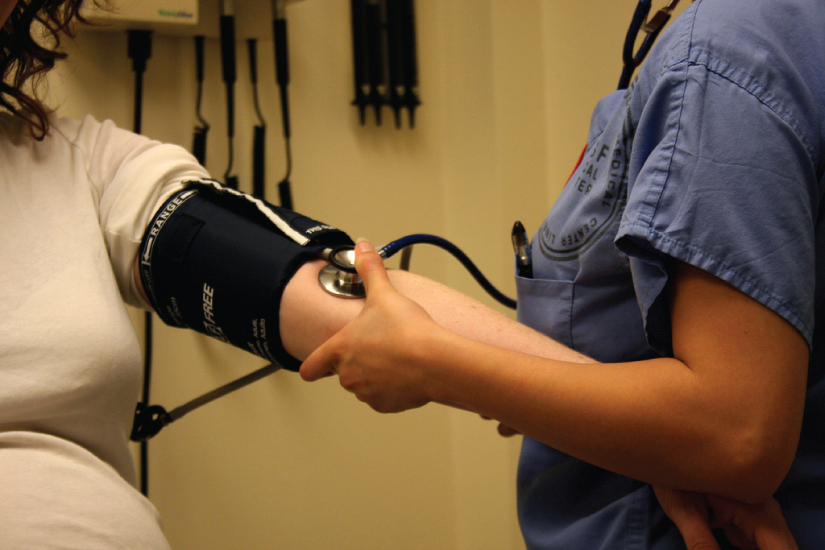
|

1.1 An introduction to the human body Read Online
1.2 The chemical level of organization Read Online

After studying this chapter, you will be able to:
Though you may approach a course in anatomy and physiology strictly as a requirement for your field of study, the knowledge you gain in this course will serve you well in many aspects of your life. An understanding of anatomy and physiology is not only fundamental to any career in the health professions, but it can also benefit your own health. Familiarity with the human body can help you make healthful choices and prompt you to take appropriate action when signs of illness arise. Your knowledge in this field will help you understand news about nutrition, medications, medical devices, and procedures and help you understand genetic or infectious diseases. At some point, everyone will have a problem with some aspect of his or her body and your knowledge can help you to be a better parent, spouse, partner, friend, colleague, or caregiver.
This chapter begins with an overview of anatomy and physiology and a preview of the body regions and functions. It then covers the characteristics of life and how the body works to maintain stable conditions. It introduces a set of standard terms for body structures and for planes and positions in the body that will serve as a foundation for more comprehensive information covered later in the text. It ends with examples of medical imaging used to see inside the living body.
Question: The landmark 1969 case, Tarasoff versus the Board of Regents of the University of California illuminated
Choices:
difficulties involved in client/counselor sexual behavior.
ethical issues in relation to research.
the duty to warn a client in imminent danger
the impact of an impaired professiona
Question: Which group has been most instrumental in opposing counselor licensure?
Choices:
Social workers
Psychiatrists.
Psychologists.
AAMFT members
Question: In the late 1970s, AACD ( known as ACA since 1992) began to focus very heavily on professional credentialing. This led to the formation of the
Choices:
CCMHC.
NBCC
CACREP, formed in 1981.
APGA, formed in 1952.
Question: Ethical guidelines were fi rst created for the helping professions in 1953 when the American Psychological Association (APA) published their fi rst code of ethics. The National Association of Social Workers (NASW) created their code in 1960, and in 1961, the organization that is now ACA adopted ethics for counselors. Ethics always describe
Choices:
laws.
universal principles which apply to all helpers.
standards of conduct imposed by ACA and NBCC.
all of the above
Question: Most ethical dilemmas are related to
Choices:
confi dentiality.
testing.
diagnosis.
research.
Question: A counselor reveals information that is extremely damaging to a client’s reputation. This counselor could be accused of
Choices:
beneficence.
justice
nonmaleficence
defamation
Question: Which choice would most likely violate the counseling ethic or law termed “scope of practice”?
Choices:
A counselor who is using good accurate empathy with a client, but fails to confront her about her excessive drinking.
A licensed counselor who gives the client a DSM diagnostic code for insurance
A counselor who is too active-directive with a client
A counselor who is conducting a strict Freudian psychoanalysis with the client.
Question: State laws can govern title usage and practice, however, they do not govern
Choices:
accreditation
counselor licensure
psychologist licensure
involuntary commitment to state psychiatric facilities
Question: An exception to confi dentiality could occur when a client is suicidal. Suicidal warning signs include
Choices:
repeatedly joking about killing one’s self.
giving away prized possessions after one has been depressed for an extended period of time
a previous suicide attempt and a very detailed suicide plan for the future
all of the above
Question: By passing the NCE, a counselor can attain _______, given via NBCC.
Choices:
NCC, a generic certifi cation for counselors.
NCC, a specialty mental health certifi cation for counselors.
NCC, national certifi cation for school counselors.
MAC, master addictions counselor.
Question: A statement of disclosure could include all except
Choices:
a list of the courses the counselor took in graduate school.
the counselor’s qualifi cations, offi ce hours, and billing policies.
emergency procedures and therapy techniques utilized
a statement that confi dentiality is desirable, but cannot be guaranteed in a group setting